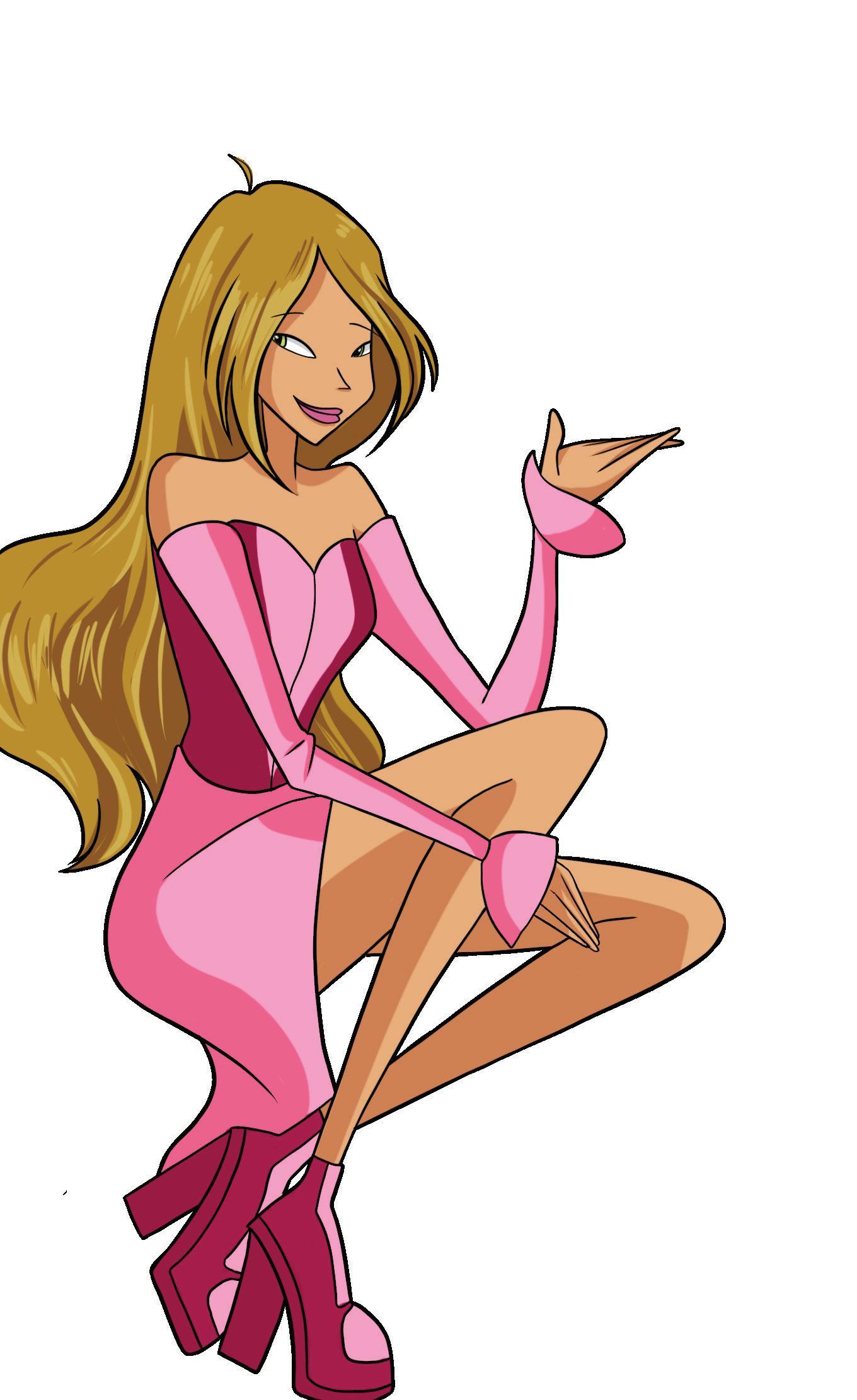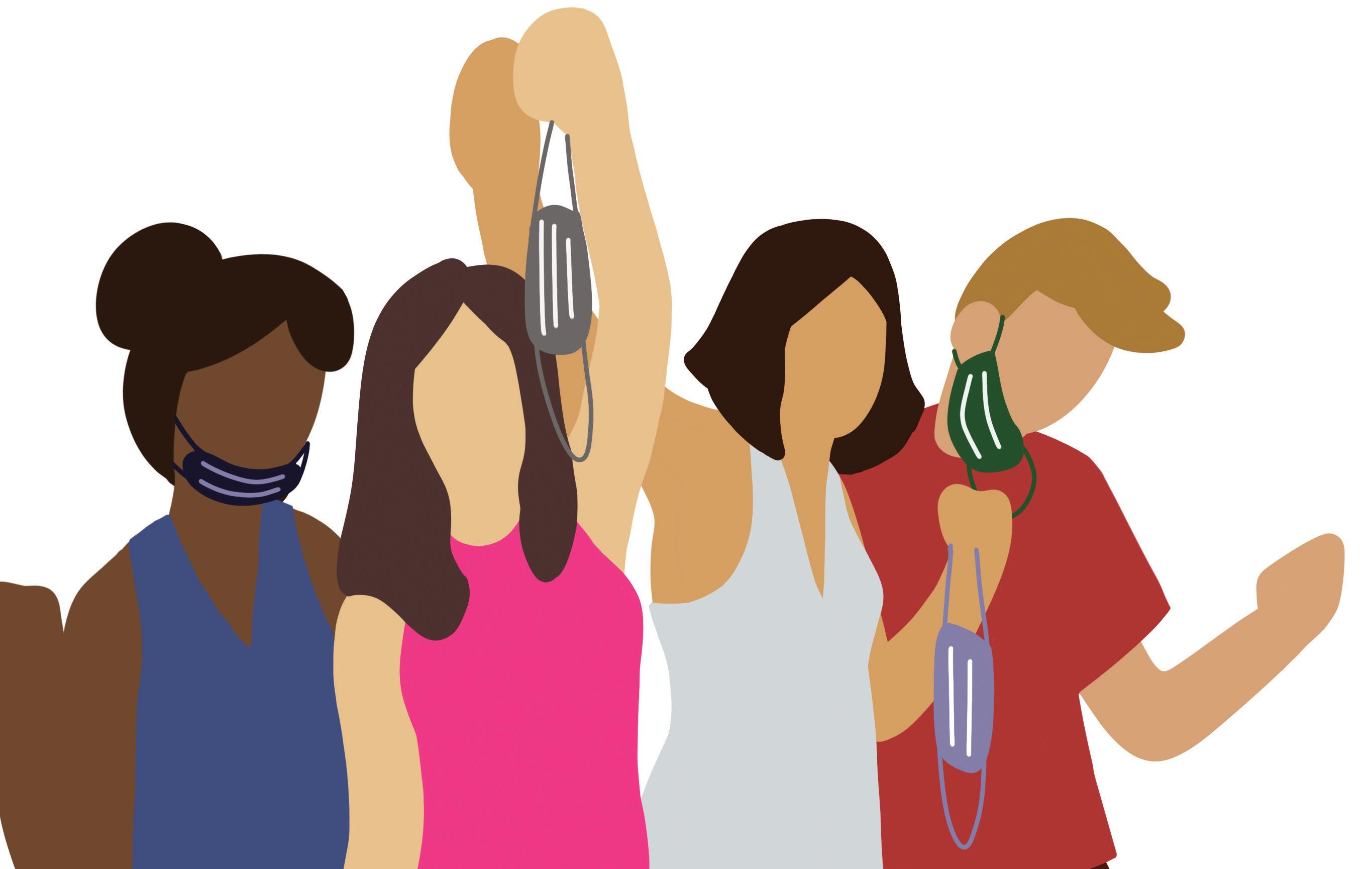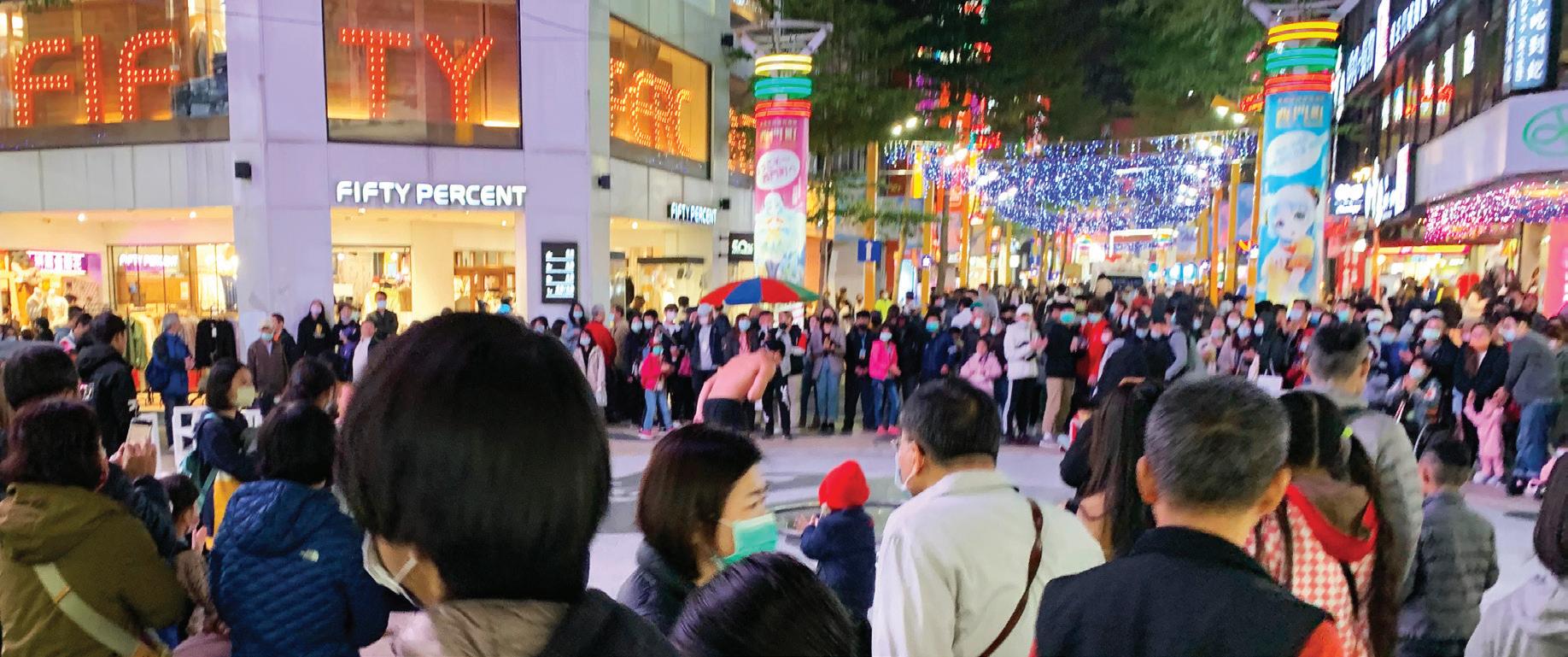
5 minute read
Fashion for the future
STAYING SAFE IN STYLE
MASK-WEARING DRIVES CREATIVITY IN FASHION WORLD
“MY FAVORITE MASK designs are floral printed ones and one that are double-sided,” Palo Alto High School sophomore
Scarlett Cummings says. “I also think that lace detailing makes them look dainty and cute.
Animal print is also very unique, and matching the designs on your mask to an outfit is such a great way to spice it up.” Face masks have become an essential piece of protective equipment for venturing outside our homes and into public spaces. When combined with regular hand washing and social distancing practices, mask-wearing is cited as one of the most effective ways to halt the spread of COVID-19 the global demand for protective equipment has not slowed down, and many are finding new ways to get creative with their face masks. As face masks quickly become the most universally worn accessory, the fashion industry has responded with thousands of different stylizations and designs.
Evolving through the ages
For centuries, significant historical events have helped to shape fashion trends. Denim and jeans were initially created for miners during the 19th century due to their durability and strength, in order to withstand the rough conditions during the Gold Rush. They later exploded in popularity, and have continued to serve as a wardrobe staple for millions all over the world.
Even the Spanish Flu epidemic of 1918 introduced trends with the purpose of stopping viral spread. Sales of “flu veils,” a thick chiffon veil secured on a large hat and covering the subject’s face, skyrocketed at the time. These earlier forms of protective wear became fashionable, a trend which draws several clear parallels to today’s increased use of face masks in wake of the COVID-19 pandemic.
Mask madness
As many nations continue to uphold a mask mandate, masks are now an everyday essential open to the artistic interpretations of the fashion industry and an array of designers.
Almost every high profile designer and label, including Fendi, Off-White and VPL, has released their own line of luxury masks. During the virtual New York Fashion Week in September, face masks were the most ubiquitous accessory, worn by almost every model as a finishing accessory to complete the outfit.
For junior Jasmine Kapadia, Christian Siriano’s Spring 2021 was especially refreshing and new with the incorporation of masks in the runway looks.
“Having the masks showed that a mask doesn’t have to ruin your outfit at all, it can actually highlight certain prints or details,” Kapadia says. “It kind of elevated the way we think of masks as not just something annoyingly required, but as a statement that you could add to your closet.”
Many students now even have their own favorite brands of masks which they use to protect themselves and add an extra element to their outfit.
“Whether it’s on a walk with my dog or downtown getting lunch, I always keep mine [mask] on,” Cummings says. “I have definitely incorporated masks into my everyday life. My favorite masks are from Kitch, Johnny Waz and handmade ones from Depop.”
Even as COVID numbers quell as vaccines are administered, face masks have a high chance of becoming part of the new normal. Face masks have been a fashion statement for years even before the pandemic in countries such as Japan, China and South Korea.
“I definitely think they’re [masks] here to stay,” Kapadia says. “Asian fashion enthusiasts were already marketing masks as street style accessories before Covid, so it seems natural that the Western market will incorporate them as well.” v
fashion For the future
GEN Z EMBRACES ANDROGYNOUS LOOKS
THE BABY BLUE DRESS marginalized communities also receive rec- For instance, in the early 1900s Coco with cascading layers of fabric ognition for their role in deconstructing the Chanel introduced trousers to women’s trimmed in black ribbons on binary of gender in fashion. fashion. Between the late 1960s and 1980s, the cover of Vogue’s December “I know people are going crazy about many pop culture icons such as Elvis Presissue received a flurry of media attention, Harry Styles on the cover of Vogue and ley, David Bowie and Jimi Hendrix famousnot directed at the outfit but at the man wearing it. English singer and actor Harry Styles was the first “ The fashion and modeling industries have to accommodate us now.” yes, that was cool to see, but people acting like he’s doing something never before seen is foolish,” Scherly wore what is considered more feminine styles of clothing and makeup. “I think we’re definitely seeing a lot more male models and in fashion, or editorial style, but blurred fashion lines in general, which I think is great,” McVey said. man to appear — ATTICUS SCHERER, senior er said. “There has on a Vogue cover been gender-bend- Gen Z blurs boundaries alone, and his out- ing fashion going Scherer attributes the rising popularity fit choice is just one example of the larger on long before him, especially in the queer of androgynous looks in mainstream fashmovement to make all fashion choices ac- POC [people of color] community.” ion to Generation Z. Some students at Paly cessible regardless of gender. Yet Styles is These pioneers from historically have embraced this change. far from the first celebrity to take a step to- marginalized or overlooked groups “Just some simple jewelry, light wards nonconformity. Many diverse icons include the Japanese fashion de- makeup or even a heel or a skirt have left their mark on fashion history. As a signers Yohji Yamamoto and Rei or dress is fun to just throw on professional model, Palo Alto High School Kawakubo, as well as Prince, Fred- to make any outfit just a touch senior Amanda McVey is familiar with the die Mercury, Jaden Smith and Billy of androgynous,” Scherer said. movement. Porter. If more people open their
“If you think of people like Har- “He [Styles] is still minds to the idea of unrery Styles or Billy Porter, they’re definitely a cisgender white male,” stricted fashion, the inblending the fashion lines and making fash- Scherer said. “That does not dustry will have to shift ion more of a spectrum and more accessi- take away at all from his to accommodate a new ble,” McVey said. “In the sense of moving achievements. However, it demand. away from gender traits, they pick things is important to look at the “I think that peowith different silhouettes, different patterns trailblazers before him that ple just growing more and colors.” allowed him to be himself accepting has led this and dress however he freedom of expression Gender-neutral outfits through time wants on the cover of that many people, es-
Androgynous fashion promotes cloth- Vogue.” pecially Gen Z kids, ing that does not conform to gender norms, are flourishing unallowing people to express der,” Scherer said. themselves in any way they “The modeling would like. and fashion in-
Although Styles be- dustries will came an icon for his un- have to acconventional styles, senior commodate Atticus Scherer hopes that us now.” v
MEN IN SKIRTS — Singer Harry Styles is drawn in one of his iconic outfits that called attention to androgynous fashion.










